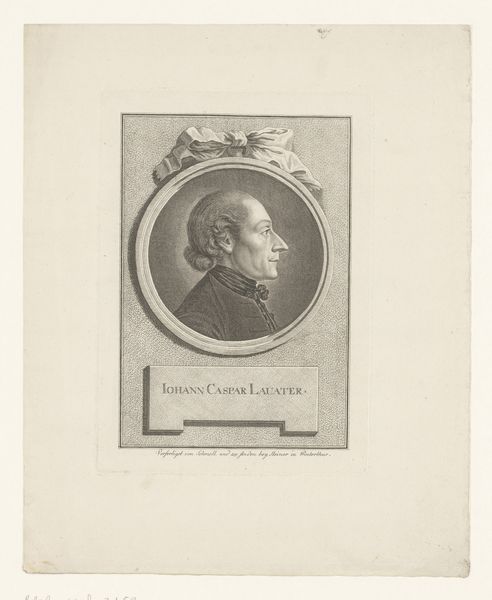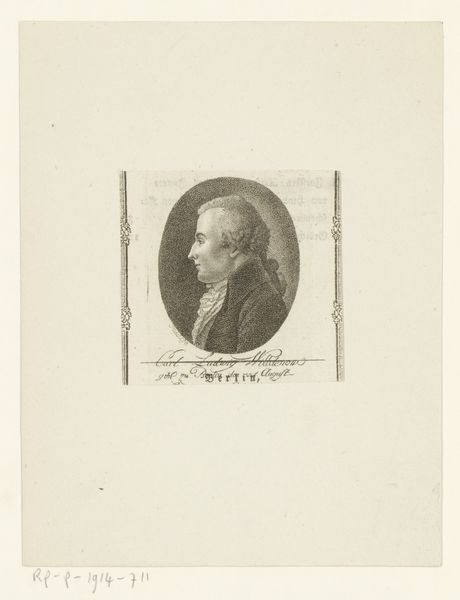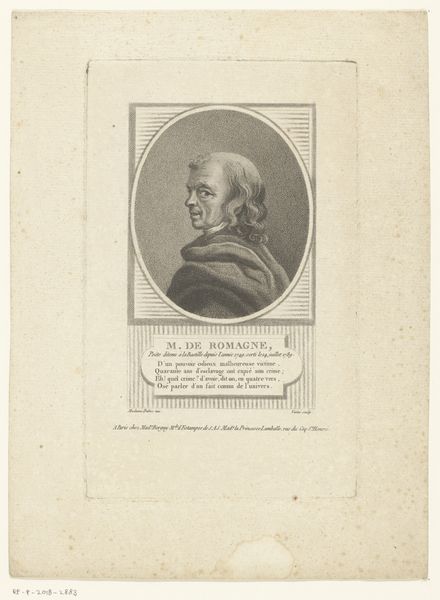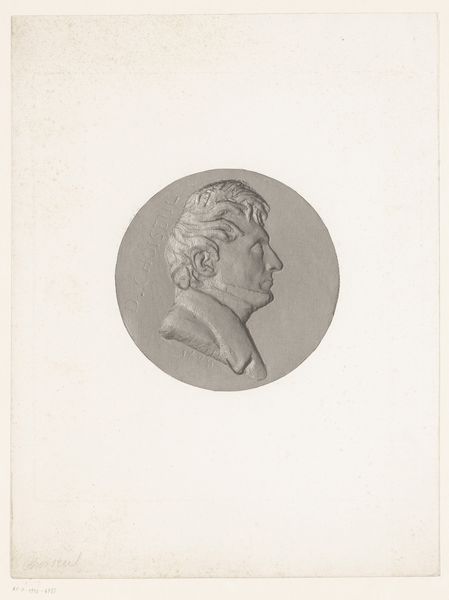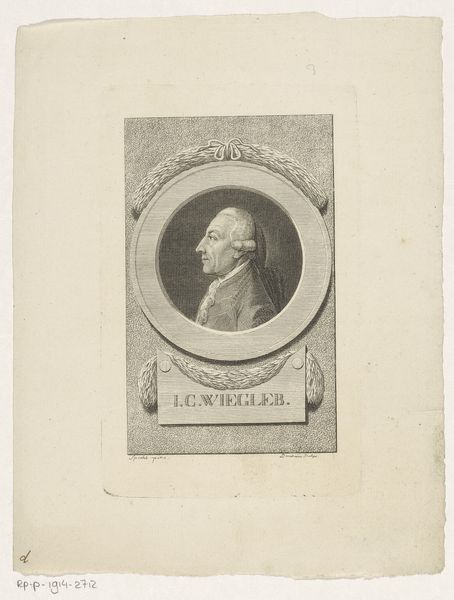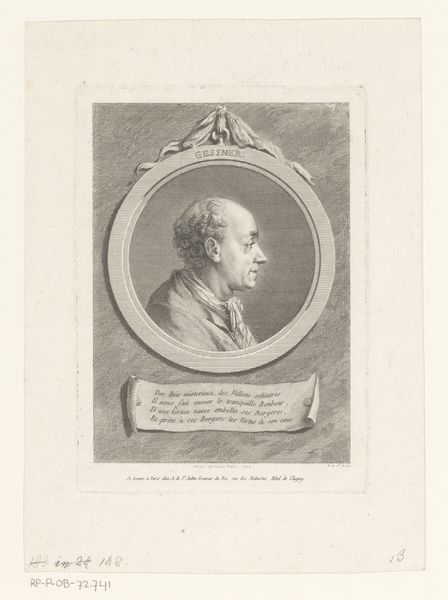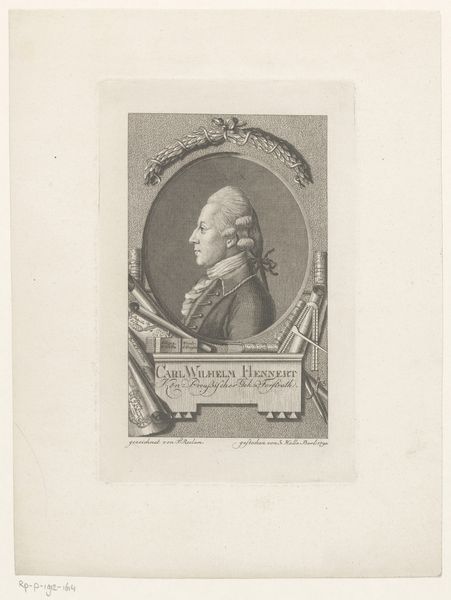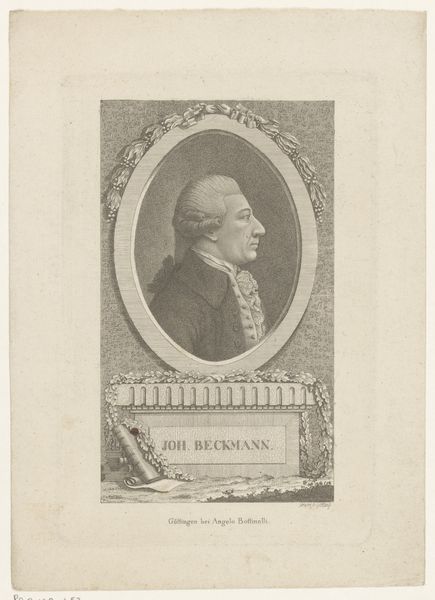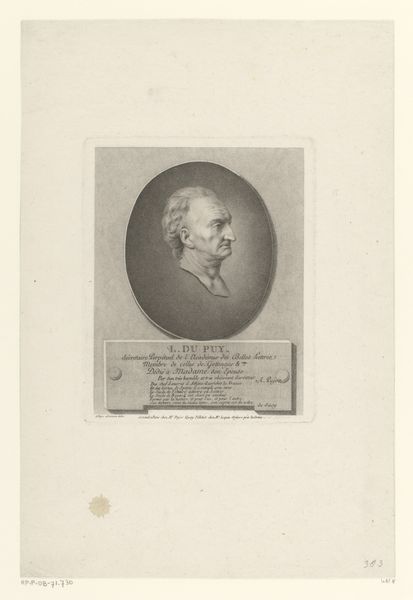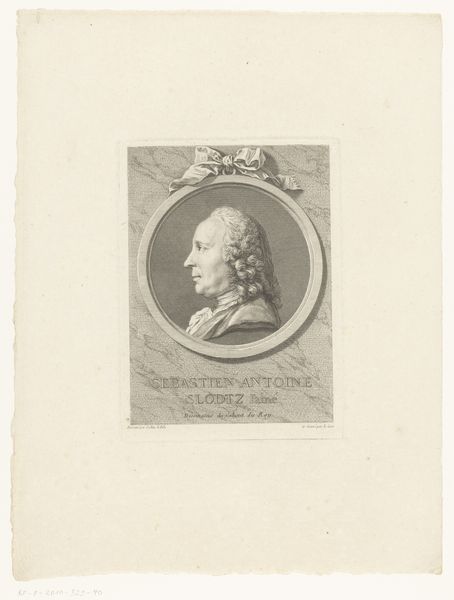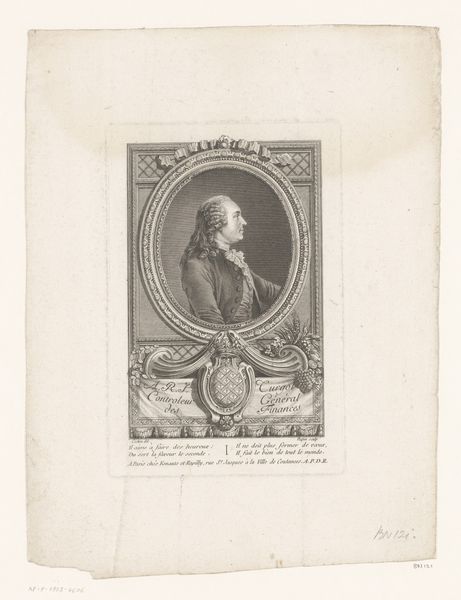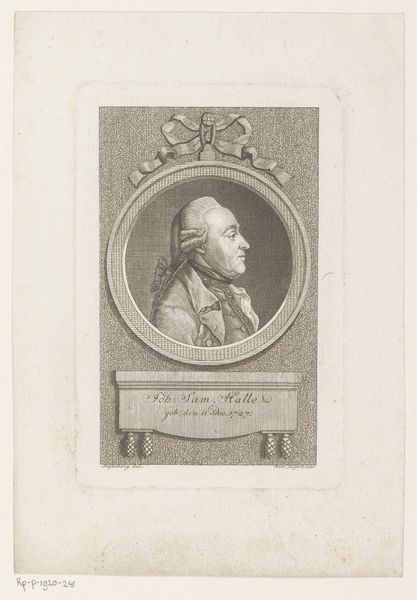
print, engraving
#
portrait
#
neoclacissism
# print
#
history-painting
#
engraving
Dimensions: height 161 mm, width 113 mm
Copyright: Rijks Museum: Open Domain
Editor: So, here we have the "Portretbuste van Johann Joachim Winckelmann," dating somewhere between 1740 and 1808. It’s a print – an engraving, to be precise – of a Neoclassical portrait bust. The crisp lines and austere presentation make me think about how the subject, Winckelmann, wanted to be perceived. What do you see in this work? Curator: It's fascinating how this print engages with the visual politics of the era. Winckelmann was, after all, a hugely influential figure in the rise of Neoclassicism. The medium – printmaking – suggests a desire for broad dissemination of this image, positioning Winckelmann within a specific intellectual lineage and making him almost accessible to a wide public. How does this medium and style reflect on Winckelmann’s persona? Editor: It's interesting that you mention accessibility, because the print medium, unlike a unique marble bust, makes this image of Winckelmann repeatable and distributable. Is that why prints like this gained popularity during this time? Curator: Absolutely! Consider how prints facilitated the spread of Enlightenment ideals. Winckelmann’s scholarship emphasized the values of ancient Greece and Rome, which many considered the foundations of Western civilization and republican virtue. Reproducing his image makes those ideals and the intellectual's persona available for wider distribution and reinforces specific cultural and political values. What might this imply about the role of art and the artist in the 18th century? Editor: It positions art as a powerful tool for shaping cultural and even political identity, almost like propaganda. Curator: Precisely. These prints aren't just about aesthetics; they actively participate in the construction of historical narratives and societal values. The printing is really the dissemination of influence. Editor: This was such a different angle from what I had initially thought, seeing it as simply a portrait. It is very helpful to learn about dissemination and access and political background as major influences of art history. Curator: It’s through this critical lens, seeing art within its cultural context, that we truly unlock its complexities.
Comments
No comments
Be the first to comment and join the conversation on the ultimate creative platform.
